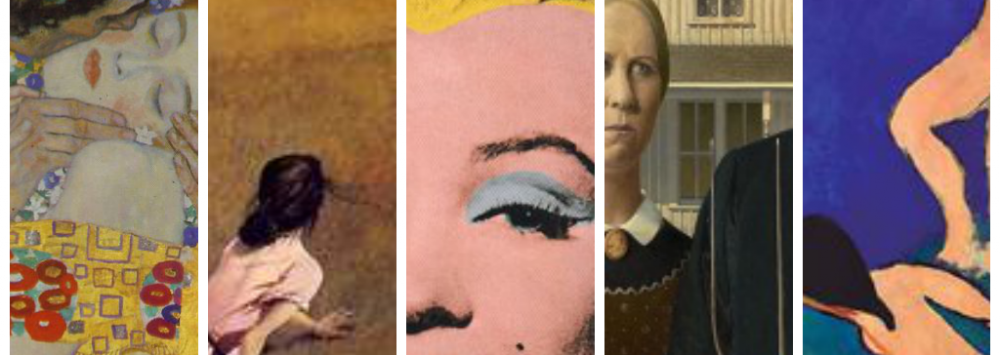*** JOSEPH STELLA ***
By: Natalie Pompos
BIOGRAPHY, INFLUENCES, MEDIA, TECHNIQUE, MOVEMENT, STYLE, SUBJECT MATTER
Joseph Stella was born on June 13, 1877 in Muro Lucano, Italy. He is most famously regarded as a prominent Italian-born American Futurist painter. However, he is also noted for his exploration of a myriad of styles and subjects. His most famous works concentrate on depictions of America’s industrialist era.
Stella spent his young adult years in Europe until relocating to the United States. In 1896, he ventured to America in order to receive a medical education. Despite the opportunity involving a profession in medicine, he abandoned his studies to fulfill his passion for art. Stella enrolled at the New York School of Art, and began his studies with William Merritt Chase. His initial artistic adventures from 1905 to 1909 involved illustration; at this time, several of his realist drawings were published in magazines.
Upon Stella’s return to Italy in 1909, he became an integral member of the Italian Futurist movement. At this time, his work began to acquire the characteristics prevalent of the Futurist era’s principles. In 1913, The Armory Show provided a unique opportunity for Stella to attain greater exposure and inspiration through experimentation of modernist styles.
Originally, Stella’s work resembled characteristics of an academic realist. He placed great emphasis on the standards developed during the Neoclassicism and Romanticism movements. However, his latter pieces began to resemble a more modernist style. His more mature pieces are noted for their exaggerated and dynamic linear structures. Moreover, these works embraced the Futurism Movement with influences such as technology, youths’ innovative culture, rebellious approaches to established classical artistic ideals, violence illustrating society’s shift towards a more fast paced life, and the depiction of motion-speed-rhythm.
Throughout the 1920s, Stella became a key fixture of the New York City art scene. His work showcased his enchantment with the geometric attributes and custom architecture of Lower Manhattan. His works of Lower Manhattan blend elements of Cubism and Futurism. Stella’s most famous work is often regarded as his piece entitledBrooklyn Bridge. In this piece, he illustrates bold diagonal cables and their power to transmit energy. Throughout his career Stella created a variety of depictions of the Bridge. His fervent interest in the structure provided him with a great deal of inspiration for many artistic successes. Within his Bridge pieces, he unites the prosperity and advancement of modernity with the stability and promise of a prosperous future through the integration of his hands.
During the 1930s, Stella’s worked collectively with the Federal Art Project. This was a visual arts campaign during the Great Depression to commission art work through the New Deal Works Progress Administration Federal One Program in the United States of America. Following his efforts with the FAP, he traveled around North Africa, Europe, and the West Indies. All of these locations exposed him to vastly different artistic perspectives through which he was able to gain inspiration. At this time, his works became a blend of realism, abstraction, and surrealism. City themes, religious icons, botanical scenery, ocean vistas, vibrant still-lifes of fruits, vegetables, and other various objects became primary subjects for this abstract adventures.
The progression of Stella’s artwork incorporating a variety of movement’s principles made him isolated in the artistic community. His work was no longer regarded so highly in New York City. Some artists believed he had strayed too far from the times. As a result, the years preceding his death are marred with financial turmoil and loss of prestige. In the early 1940s, Stella was diagnosed with a heart disease. Doctors attributed his condition to the high levels of anxiety he suffered from. In 1946, Stella passed due to heart failure. His remains lay in an ornate mausoleum in The Woodlawn Cemetery in The Bronx of New York City.
21st CENTURY COMPARISON: YULIA BRODSKAYA
A comparison can be drawn between Joseph Stella’s work and that of artist Yulia Brodskaya. Both Stella and Brodskaya’s work incorporates a variety of artistic movements. Collectively their work is highly regarded for its use of linear structures, emphasis on movement, technology, and rhythm. Brodskaya’s was born in Moscow, Russia in 1983 and received formal art training at University of Hertfordshire. She currently resides in the United Kingdom.
PERSONAL REFLECTION
Exploring the Futurist Movement introduced me to a completely new set of artistic principles. Never before had I even heard of this movement. I enjoyed exploring the movement’s emphasis on technology, youth, innovation, and industrial prowess. Studying the Futurist era transported me back to my studies last year in American History. Through many of the works, I was able to connect my background in history to greater enhance my exploration of each piece. Joseph Stella’s work in particular brought about many connections. His concentration on New York City truly embraced the Industrial era of America’s history.
BIBLIOGRAPHY
“Bridge.” San Francisco Museum of Modern Art. N.p., n.d. Web. 03 Apr. 2014. <http://www.sfmoma.org/explore/collection/artwork/285>.







